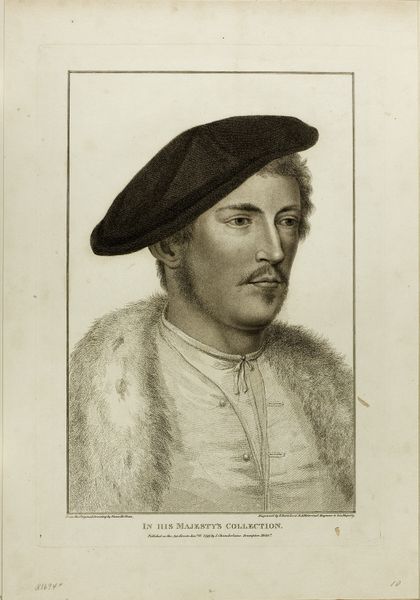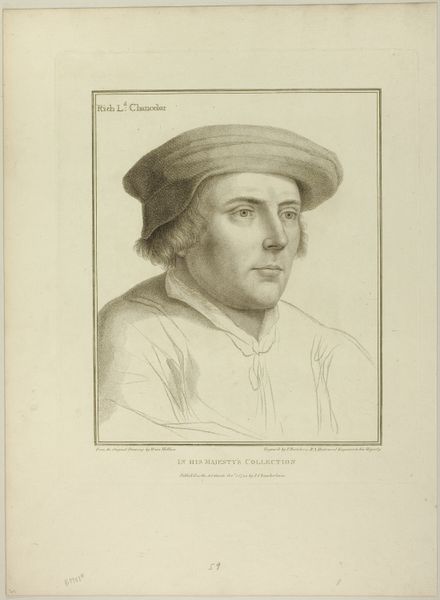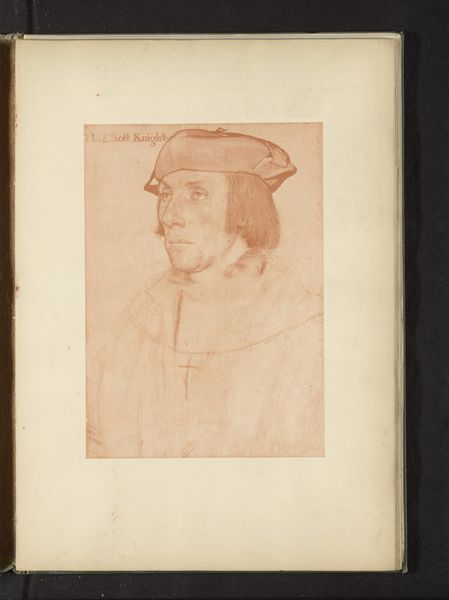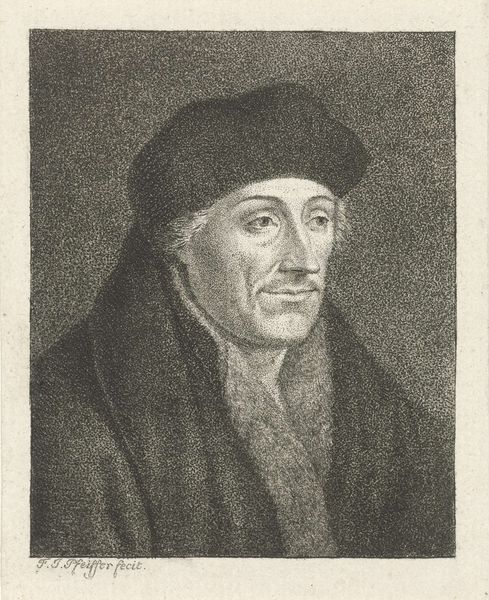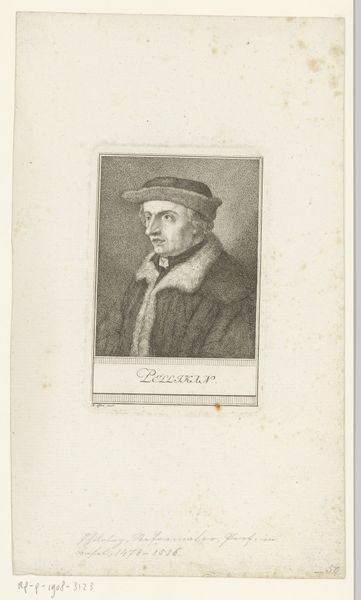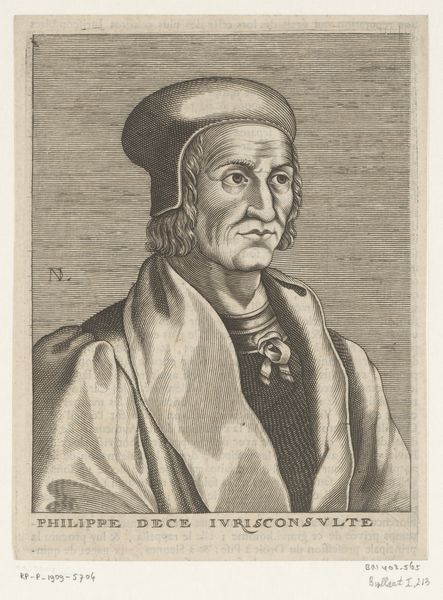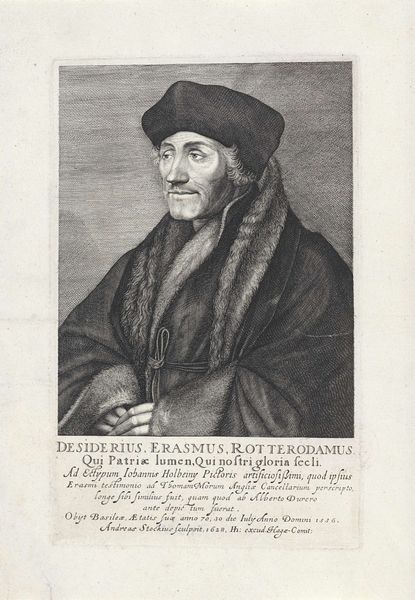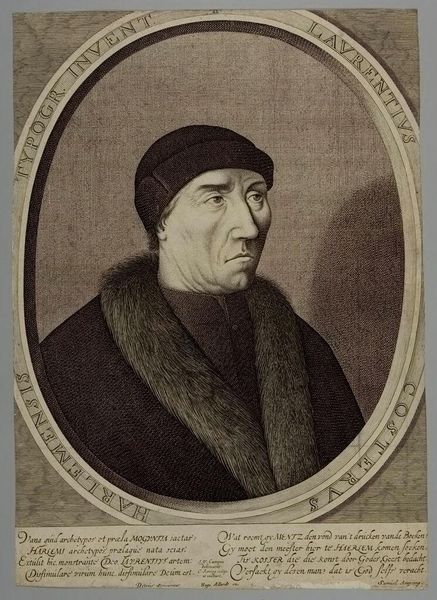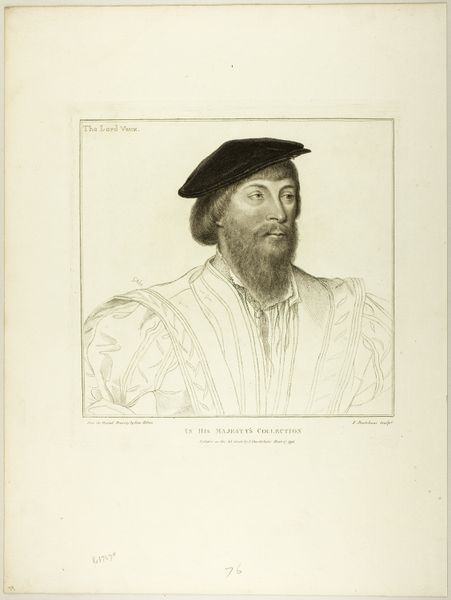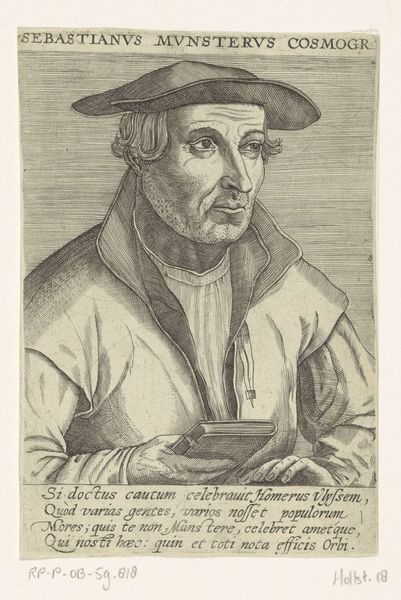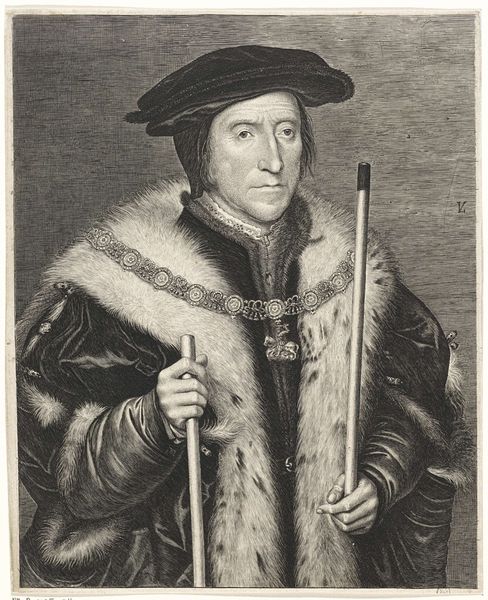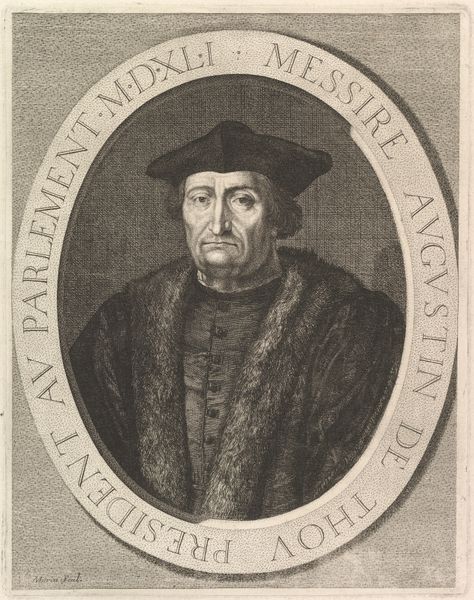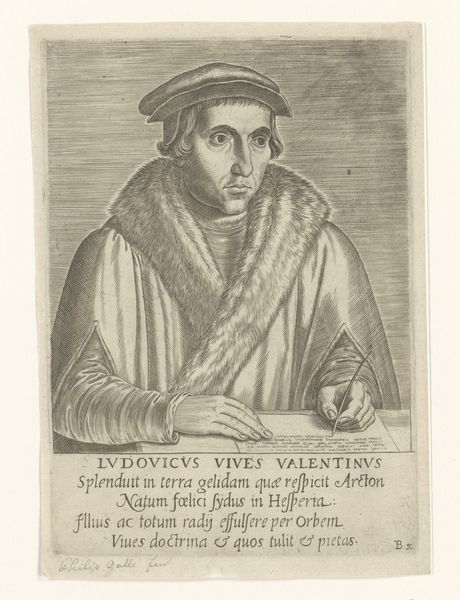
drawing, print, paper, engraving
#
portrait
#
drawing
# print
#
paper
#
portrait drawing
#
history-painting
#
engraving
#
portrait art
Dimensions: 429 × 302 mm (image); 461 × 338 mm (plate); 540 × 408 mm (sheet)
Copyright: Public Domain
Curator: This portrait engraving from 1793, "Sir Thomas More, Lord Chancellor," created by Francesco Bartolozzi, offers a compelling glimpse into the representation of power. The print, rendered on paper, holds layers of social and political implications worth exploring. Editor: My immediate sense is one of subdued power. The subject's gaze is steady, but the monochrome palette mutes any potential drama. There's an air of contained energy, emphasized by the textures of fur and fabric. What do you see in the symbolism at play here? Curator: Well, it is hard to ignore that Sir Thomas More’s life became a focal point in religious and political power struggles. Considering Bartolozzi's time, we must acknowledge that depicting More would inherently engage with narratives of resistance against tyrannical authority, especially within a Catholic framework. Editor: Absolutely. The hat, the fur – they're not merely garments; they speak to More's status and role within a hierarchical system. Notice how Bartolozzi uses line work to differentiate textures—the soft fur contrasts with the crisper lines defining More’s face, which really brings forward his features, implying insight and resolve. Do you sense a psychological complexity here? Curator: Definitely, it highlights how portraits functioned to codify social identity and philosophical fortitude. It invites considering concepts of representation, and also how a figure can signify so many ideological complexities within one image. And, in a world shaped by political upheaval, I also feel a reflection on personal convictions and the price they demand. Editor: Exactly, it becomes a historical and psychological artifact, reminding us of the heavy burdens of both power and morality. He is positioned here as a very weighty figure in time. Curator: His position as an icon in history cannot be understated; from an intersectional perspective, how we can reclaim those complicated moments, I find truly remarkable. Editor: I agree; through keen understanding of visual and symbolic language, we are reminded of history’s reverberations across the centuries, which in turn enrich our reading of artistic productions like this one. Thank you. Curator: And to you. Examining such artistic moments from distinct vantage points opens dialogues.
Comments
No comments
Be the first to comment and join the conversation on the ultimate creative platform.

